The surface storage component of the subbasin element represents the ground surface where water may accumulate in surface depression storage. The depression storage of an impervious surface such as a parking lot is generally close to zero. However, the depression storage for an agricultural field can be quite large if conservation tillage practices are used.
In GeoHECHMS, the simple storage method is used to compute the precipitation losses due to depression storage. Selecting a surface storage method is optional and generally only used for continuous simulation applications.
The simple storage method provides a simple representation of the soil surface. In this method, all the precipitation or precipitation through-fall from the canopy arriving on the soil surface is captured in storage until the storage capacity of the surface is full. Water in surface storage infiltrates into the soil whenever it is present, i.e., water will infiltrate even when the storage capacity is not full. The surface runoff will begin when the storage capacity is filled, and the precipitation through-fall rate exceeds the infiltration rate.
Note that the grided surface storage method is not supported in GeoHECHMS as it is mostly used by researchers or the Army Corps of Engineers.
The user can select a surface storage method for a subbasin from the General Specifications section of the Subbasin Data dialog box.
Follow the steps given below to select a surface storage method:
- From the Input ribbon menu, select the Subbasin Data command.

- The Subbasin Data dialog box will be displayed.
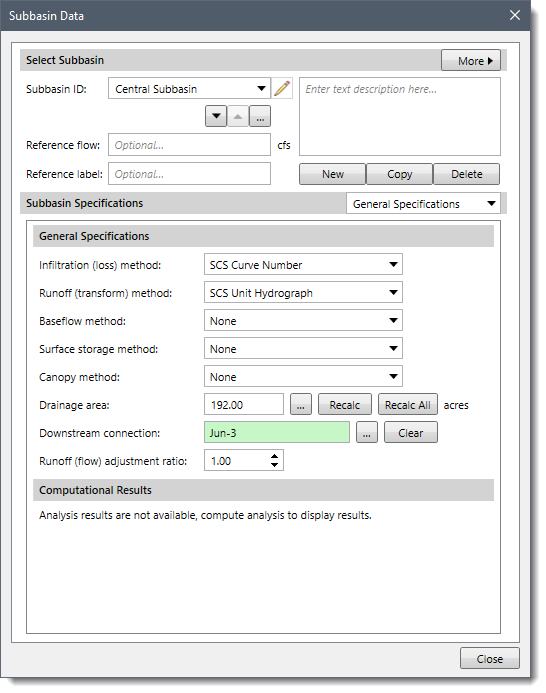
- From the Subbasin ID dropdown combo box, select the subbasin to assign a surface storage method.
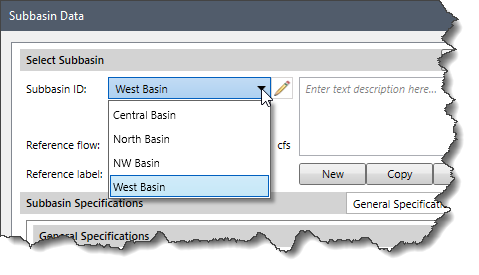
- From the Surface storage method dropdown combo box, select the surface storage method.
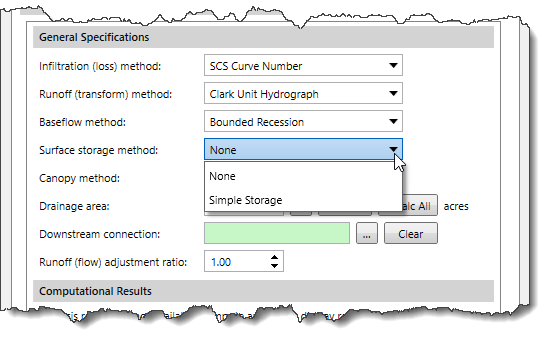
- To enter the parameters for the selected surface storage method, select the Surface Storage Data option from the Subbasin Specifications dropdown combo box. Note that the Surface Storage Data option will be grayed out (i.e., unavailable) when None is selected for the surface storage method.
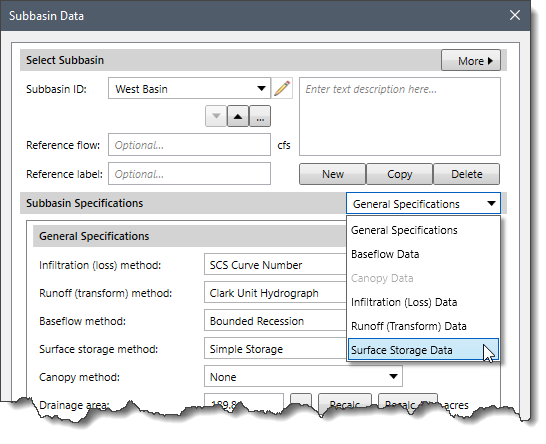
- The Surface Storage Data panel will be displayed.
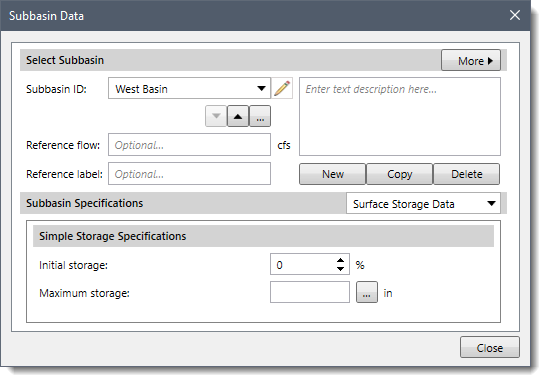
- Specify the initial condition of the surface storage using the Initial storage spin control button. Initial condition is specified as the percentage of the surface storage that is full of water at the beginning of the simulation.
- Specify the maximum amount of water that can be held on the soil surface in the Maximum storage entry field. This is the amount of water that can be accumulated in the depression storage before surface runoff begins. The amount of storage is specified as an effective depth of water. Click the […] button to display the Maximum Storage lookup table.
- When the data has been defined, click the [Close] button to close the Subbasin Data dialog box.
Pros and Cons of Simple Storage Method
| Pros | Cons |
It is simple to use and parameterize.
It is advantageous within areas like the upper midwestern United States or agricultural areas subjected to conservation practices. | Multiple factors can affect surface storage, and hence calibration and validation of parameters can be challenging. |
